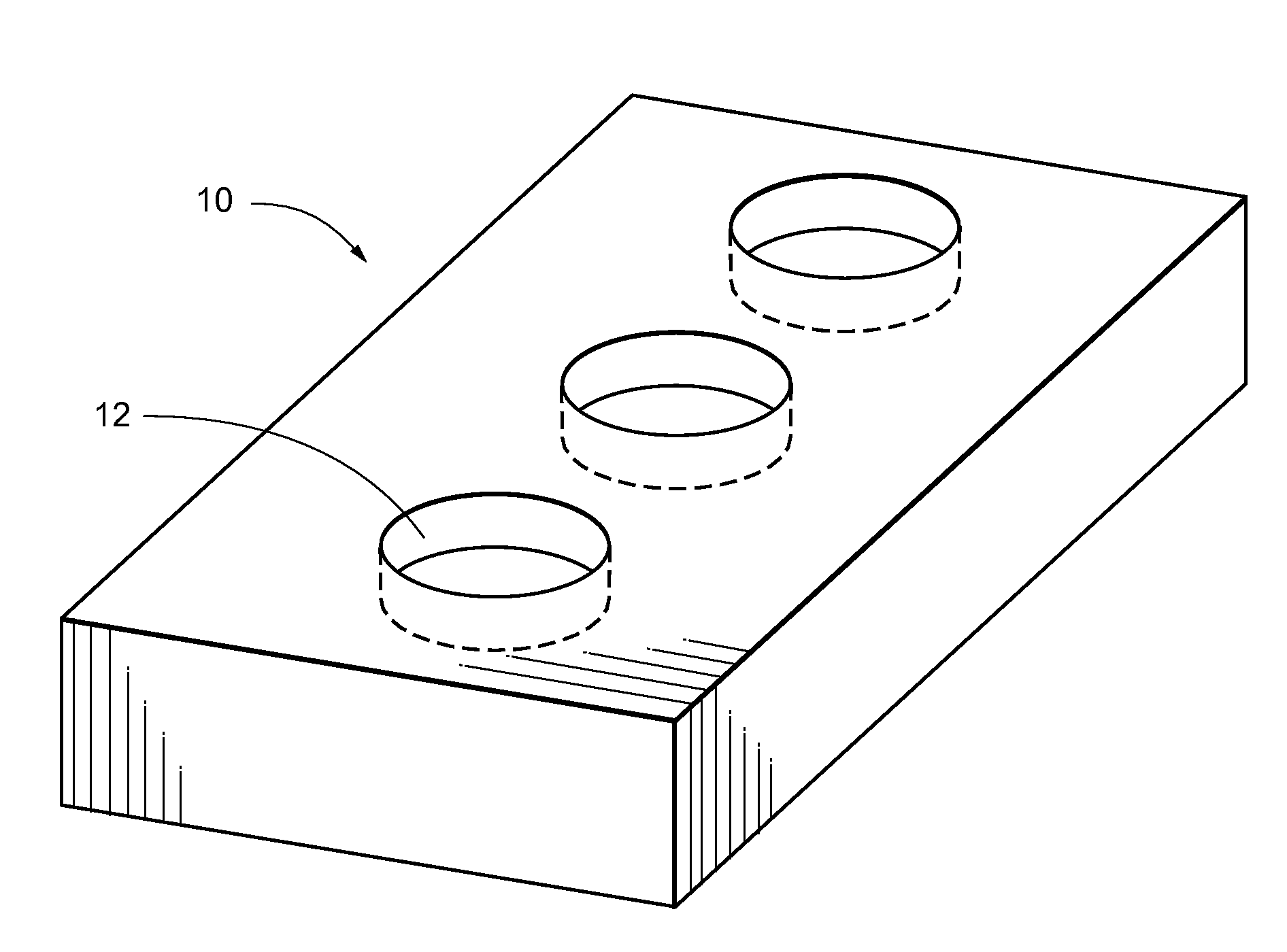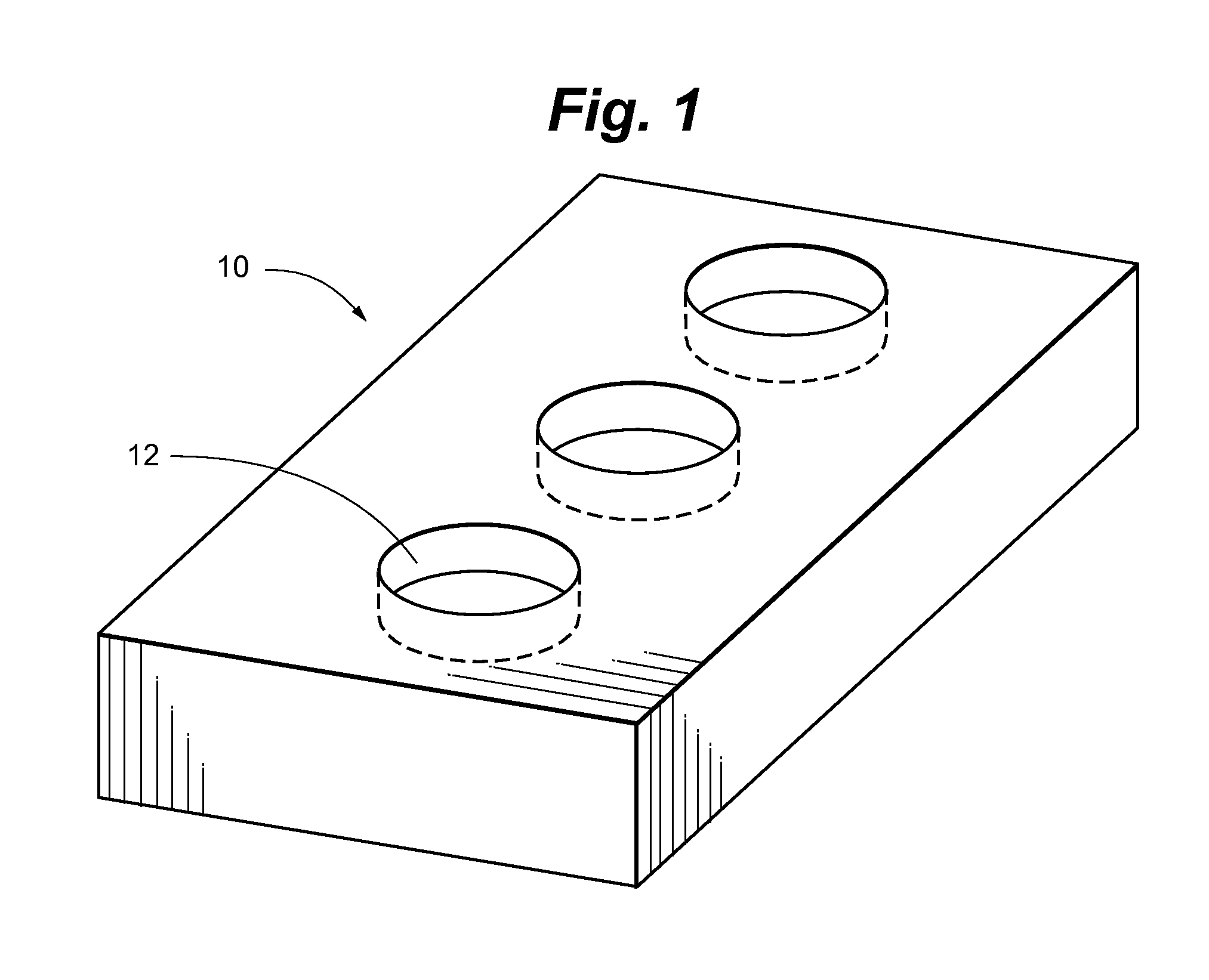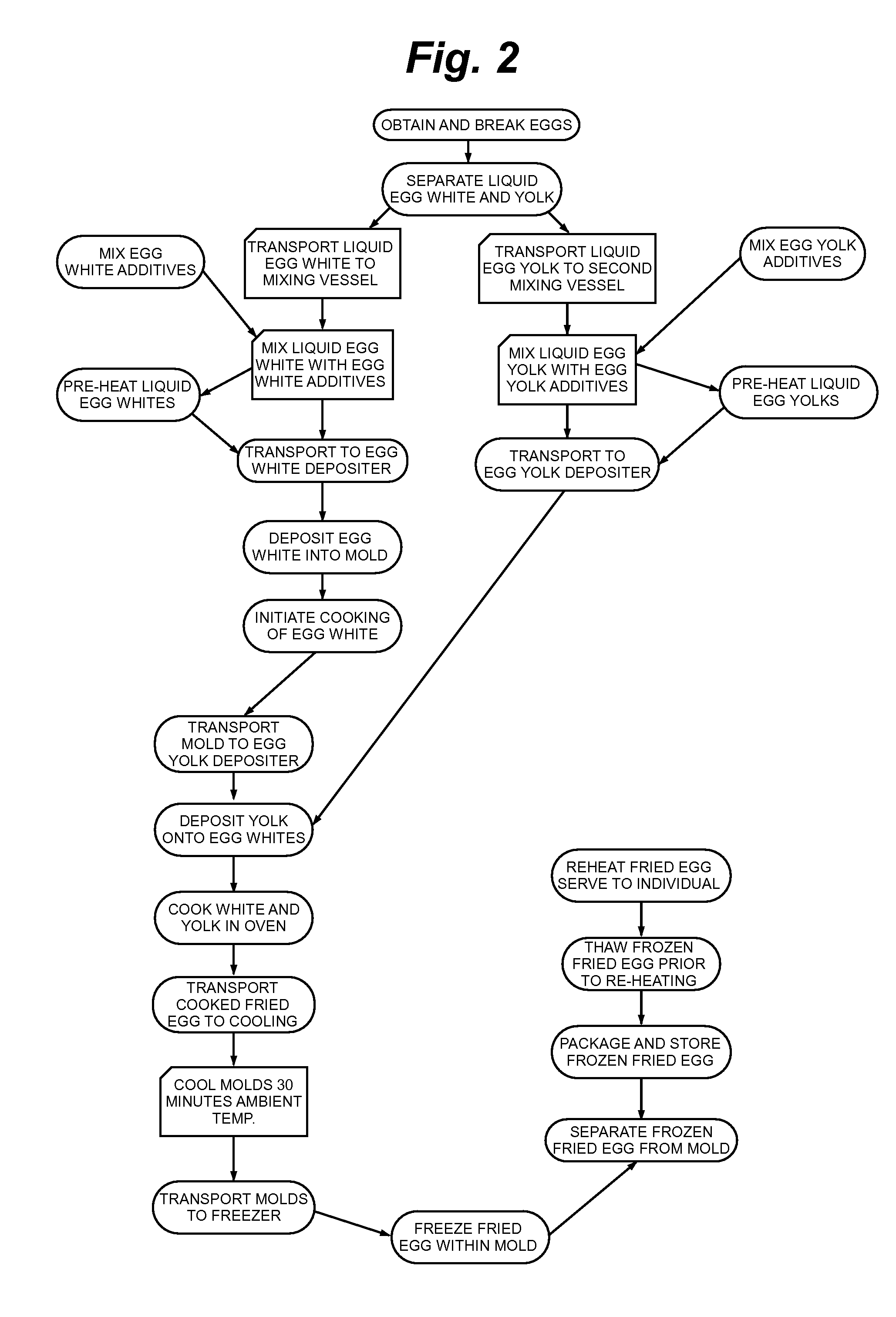Formulated fried egg product
- Summary
- Abstract
- Description
- Claims
- Application Information
AI Technical Summary
Benefits of technology
Problems solved by technology
Method used
Image
Examples
example i
[0077]Cooked egg white compositions were evaluated for texture after thawing and reheating. Liquid, blended egg white was mixed with one or more of modified food starch, gums (xanthan or guar), soy oil, and salt prior to cooking as shown in Table 4. Egg white mixtures, approximately 50 grams were cooked in 3.5-inch diameter molds at a temperature of 325° F. using a forced draft oven. The cooked egg white portions were frozen in a blast freezer unit, held frozen until being reheated for evaluation.
[0078]Egg white portions were reheated using an 1100-watt microwave oven. Individual portions were placed on paper plates, covered with a second plate and heated to internal temperatures above 140° F. The texture was evaluated. Table 4 presents the valuation of texture. A range of compositions with modified food starch, gum, and oil were found that have very good textures. Formulations without oil or formulations without modified food starch were not as effective in providing a texture that...
example ii
[0079]Egg yolk formulas were evaluated for viscosity and color. Liquid yolk was mixed with one or more of citric acid, salt, and xanthan. Table 5 shows that viscosity was increased by the addition of xanthan with or without citric acid. The combination of xanthan and citric acid resulted in a viscosity level about twice as large as the viscosity level found when only xanthan was used.
[0080]The combination of citric acid and xanthan resulted in desirable viscosity suitable for depositing during manufacturing of fried egg products. The flavor and texture were comparable and as acceptable as the yolk formulations outlined in Table 3.
[0081]Adding citric acid increased the L-values, decreased the a-values, and increased the b-values as found for egg yolk without citric acid.
example iii
[0082]Types of egg white were evaluated for forming a smooth and continuous cooked structure. Whites where from shell eggs without blending or blended liquid egg white. Blend broken out whites were cooked with and without pH adjustment as presented in Table 6.
[0083]These results summarized in Table 6 demonstrate that commercially processed broken out (BO) whites are more disposed to bubble formation than hand broken intact egg magna (intact shell) or hand separated whites (shell whites). Lower cooking temperature and higher pH mediated this effect. Adjustment of pH was with 1.0N NaOH (40 g / 960 ml water) ˜1.0 ml per 100 ml egg.
[0084]Formulated product made with various egg whites mixed with 2.5% modified food starch and 0.2% Xanthan gum were evaluated. Portions were 50 g white. Results in Table 7 show that better texture, as indicated by bubbling, crusting, or fluffing, was obtained from egg white with higher pH. Adjusting pH or using naturally aged egg white with pH at or above 8.8 ...
PUM
 Login to View More
Login to View More Abstract
Description
Claims
Application Information
 Login to View More
Login to View More - R&D
- Intellectual Property
- Life Sciences
- Materials
- Tech Scout
- Unparalleled Data Quality
- Higher Quality Content
- 60% Fewer Hallucinations
Browse by: Latest US Patents, China's latest patents, Technical Efficacy Thesaurus, Application Domain, Technology Topic, Popular Technical Reports.
© 2025 PatSnap. All rights reserved.Legal|Privacy policy|Modern Slavery Act Transparency Statement|Sitemap|About US| Contact US: help@patsnap.com



